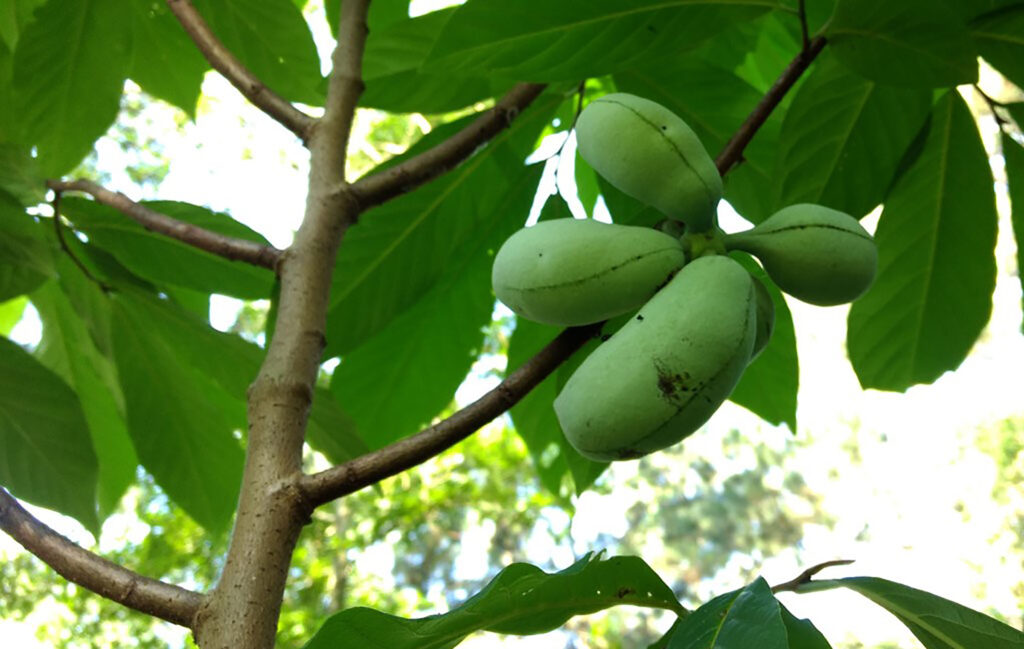Growing up in the north Georgia mountains, I thought it was normal for grandchildren to call their grandfather Pawpaw. It was not until I became an adult and developed a greater appreciation for history that I discovered the background of our nickname for my grandfather and its link to Native American tribes that lived in this part of Georgia. The memory resurfaced recently while hiking along the Chattahoochee River, near Crayfish Creek, when Sugar Hill City Council member Mason Roszel discovered some Pawpaw Trees.
Very few physical traces of Sugar Hill and Gwinnett County’s early Native American history exist today. Suwanee derived its name from a large Native American village located along the banks of Suwanee Creek, which flows into the Chattahoochee River. Frequent arrowhead and pottery discoveries at the Sugar Hill Golf Course and the new E. E. Robinson Park might also provide evidence of an additional Native American village or at least extensive hunting activity in these areas. Mysterious rock mounds and bent trees can also be found in wooded areas all around Sugar Hill. The fish weir just below and archaeological surveys near the Ga. Highway 20 bridge provide strong evidence of Native American habitation in our community’s past. Pawpaw Trees are also an important link to Sugar Hill and Gwinnett County’s Native American past.
The Creek and Cherokee Indians occupied Gwinnett County and the area that is now Sugar Hill for perhaps a couple hundred years before westward expansion brought European settlers into the area. When the Cherokee Indians ceded land in 1789 and 1790 to the United States, it first opened this part of Georgia to settlement. European settlers interacted with and learned the customs of Native American tribes like the Creek and Cherokee. Flora and food items, like the Pawpaw Tree and its fruit, then became familiar to the settlers and part of their musical traditions and folklore:
“Where, oh where is pretty, little Susie?
Pickin’ up paw-paws, puttin’ ’em in her pockets,
Pickin’ up paw-paws, puttin’ ’em in her pockets,
Pickin’ up paw-paws, puttin’ ’em in her pockets,
Way down yonder in the paw- paw patch.”
Mason and I often hike the greenspaces in and around Sugar Hill, and we see the evidence of our community’s Native American past. The best areas for adventure are the informal trails of the Chattahoochee River National Recreation Area that form the western border of our community. The evidence can sometimes be seasonal, so it is important to explore our community at all times of the year. The spring and summer months are a good time of the year to rediscover our Native American past through a rare sighting of a Pawpaw Tree.
Brandon Hembree is mayor of Sugar Hill. He is a 20-year resident of the city, and he uses his interest in history to detail Sugar Hill’s rich past.
FEATURED PHOTO: Pawpaw Trees, which are rarely seen in nature, were recently discovered by Sugar Hill City Council member Mason Roszel and Mayor Brandon Hembree while hiking along the Chattahoochee River near Crayfish Creek. Photo by Brandon Hembree.

